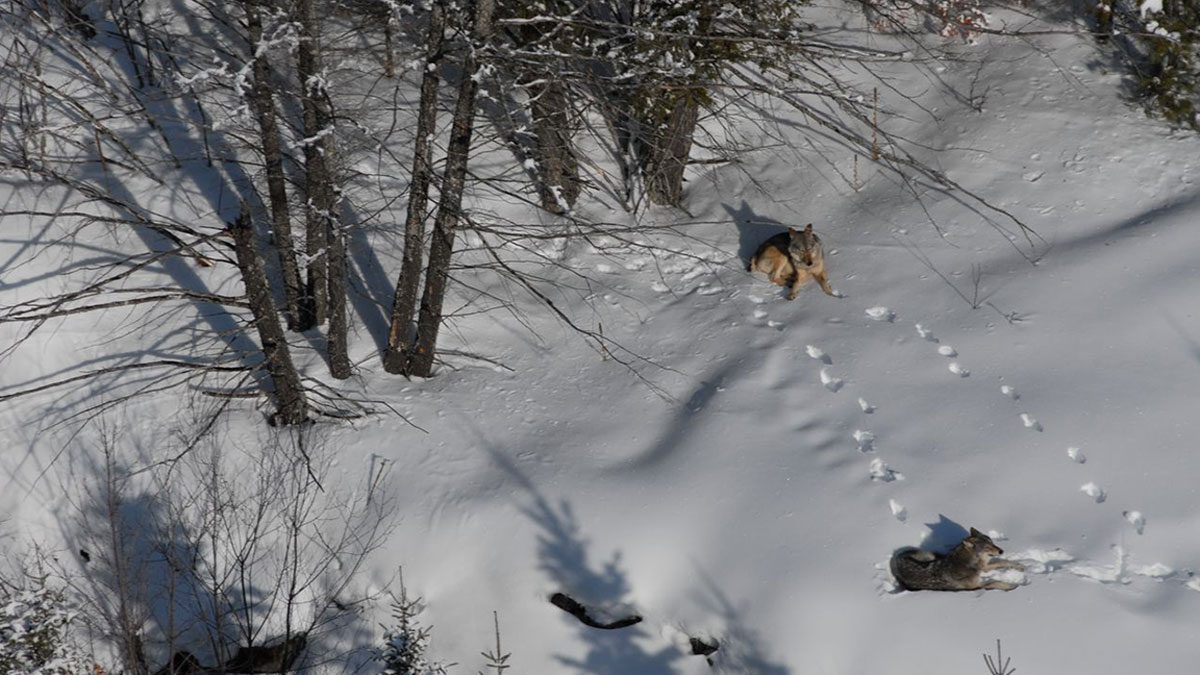There are more wolves right now in Michigan than in any time in recent history.
The Michigan Department of Natural Resources (DNR) reports its most recent winter survey points to a minimum estimated population of 695 wolves in the Upper Peninsula. That total is 250 percent larger than what’s called for in the state’s wolf management plan.
“The survey is important because it helps us monitor wolf distribution and abundance, answer research questions and evaluate progress toward state and federal recovery goals,” said Dan Kennedy, DNR Wildlife Division acting chief. “Our survey results continue to demonstrate that Michigan’s wolf population has recovered.”
Since the winter of 1993-94, combined wolf numbers in Michigan and Wisconsin have surpassed 100 wolves, meeting one of the federally established goals for delisting wolves in the Great Lakes states. In 2004, Michigan achieved its recovery goal of a minimum sustainable population of 200 wolves for five consecutive years, and wolves were removed from the state list of threatened and endangered species in 2009.
Game managers determined the Great Lakes wolf population to be recovered in 2012 and the federal government followed suit but despite easily meeting recovery thresholds, a federal judge agreed with technicalities filed by environmentalists and returned wolves to federal protection in 2014, where they remain today.
The Rocky Mountain Elk Foundation agrees with biologists and scientists that the population is recovered and maintains that state agencies should manage wolves just as they manage elk, bears, deer and other wildlife.
(Photo source: Michigan Department of Natural Resources)
